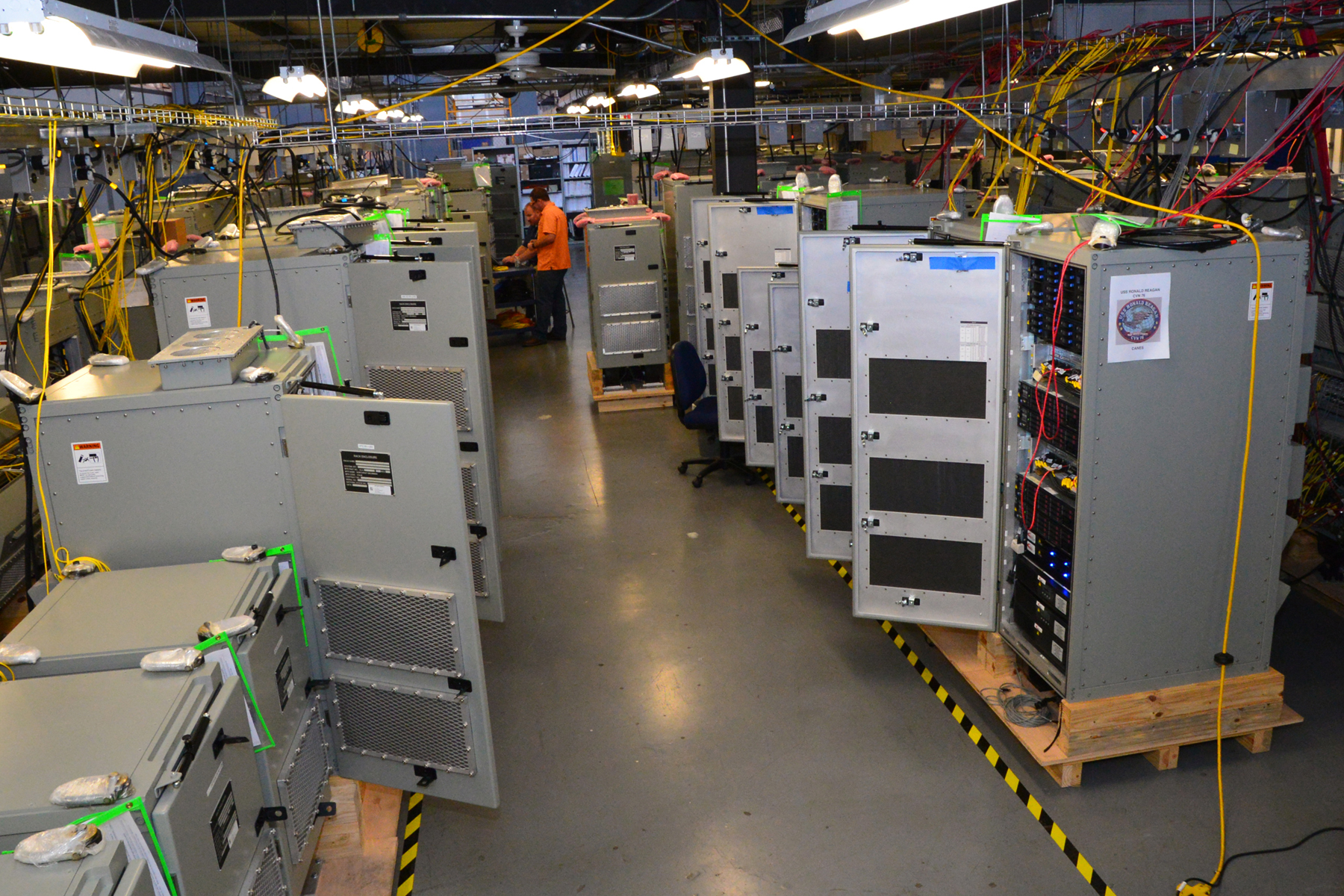
SAN DIEGO, Calif. — Three years into its plan to modernize fleet tactical networks, the Navy has sliced by more than half the time it’s taking to install the Consolidated Afloat Networks and Enterprise System on aircraft carriers and other ships and submarines.
“CANES is going great,” Rear Adm. David H. Lewis, who commands the San Diego-based Space and Naval Warfare Systems Command, told a Tuesday audience at WEST 2017 conference.
“We are putting it on two LCCs,” with completion of the installation on the command ship Blue Ridge (LCC-19) expected this spring and the full install aboard command ship Mount Whitney (LCC-20) expected to be finished sometime this fall.
“That’s a bigger install than on a carrier. More racks, more equipment, more capability,” he said of work on the fleet command ships. “That’s one of our biggest and most challenging installations.”
It’s a massive undertaking updating five older shipboard legacy systems into a more secure, adaptable, integrated platform for command, control, communication, computer and intelligence (C4I). The Navy is seeing some progress as it refines and fine tunes the process of updating afloat I.T. infrastructure, complex and physical work to remove older wiring, cables, servers, workstations and other electronics on ships and replace with the more secure and capable system.
The Navy saw initial CANES installation on aircraft carriers that stretched 18 months shrink to nine months by 2015. The first carrier put through the complex update was USS John C. Stennis (CVN-74). ()
By 2016, Lewis said, that installation time shrunk further to 7 months. In 2017, “we’re going to take that same process and expand it out to the rest of the fleet. DDGs, LPDs, LSDs, big-deck amphibs,” Lewis said. “So you’ll see what we learned in that process of accelerating CVN CANES installations promulgated throughout the fleet.”
Already, 64 guided-missile destroyers have been equipped with the next-generation infrastructure “and more are coming,” he said.
Lewis told the audience that continued improvements in testing and upgrades to test laboratories go a long way to reduce costs down the line for systems like CANES, before the infrastructure is installed on a ship, “so we know that what goes out works,” he said.
“Half of the CANES installation time is testing, so if we can pretest it before it gets to the ship, then we’ve saved time on the back side,” he noted. “It’s a lot cheaper to test it here in San Diego or in Norfolk than it is onboard the Blue Ridge in Yokosuka, Japan, or in USS Truman in Norfolk.”





